Last Updated on 5 months by admin
Think the glowing swords and moon-shaped blades in “KPop Demon Hunters” were just fantasy props? Absolutely not. Every weapon wielded by the HUNTRIX girls has roots in real Korean history, spiritual practices, and ceremonial art. These “KPop Demon Hunters” weapons are 100% real and part of Korea’s living heritage—and yes, you can actually see them. So, if you’re planning a trip to South Korea and loved the film, here’s your chance to walk through the museums, palaces, and shrines where these mystical weapons once stood as tools of war, guardianship, and divine ritual. Witness these iconic “KPop Demon Hunters” weapons, the history, origin, and how they actually look like in real life.
HUNTRIX’s Blades in “Kpop Demon Hunters”: Real Korean Weapons with Sacred Origin and History
Netflix’s “KPop Demon Hunters” gives its K-pop heroines more than just sparkle and style—it arms them with weapons steeped in centuries of Korean origin history and tradition.
Rumi’s saingeom (Four Tigers Sword), Zoey’s sinkal (Spirit Blade), and Mira’s woldo (Moon Blade) in “KPop Demon Hunters” are not some kind of fictional weapons. They came from real tools used in military and ceremonial contexts across Korean history.

Let’s uncover what they really are, where they came from, and most importantly—where you can see them in person.
Rumi’s Saingeom (사인검) – The Four Tigers Evil Slayer Sword
First of all, let’s start with Rumi’s saingeom. This Kpop Demon Hunters blade is one of the rarest weapons with Korean spiritual origin and history.
Spiritually forged at the Hour of the Tiger, on the Day of the Tiger, during the Month and Year of the Tiger—yes, Tigers!—this sword channels protective tiger energy from the Korean zodiac.
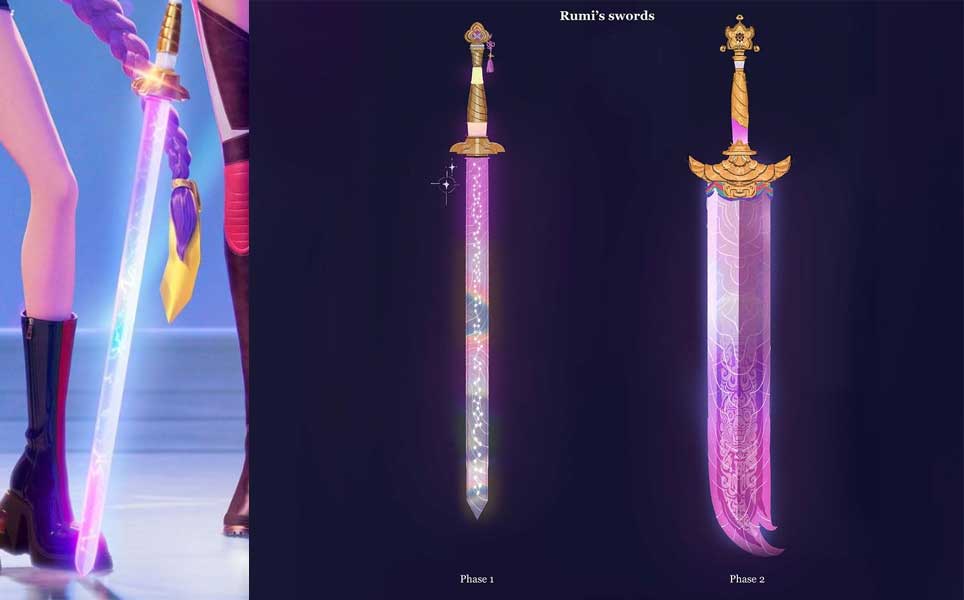
Historically, it was wielded by mudang (Korean shamans) during gut rituals to sever evil spirits and restore harmony. But some also said that ancient Joseon Kings also used them to ward off evil.
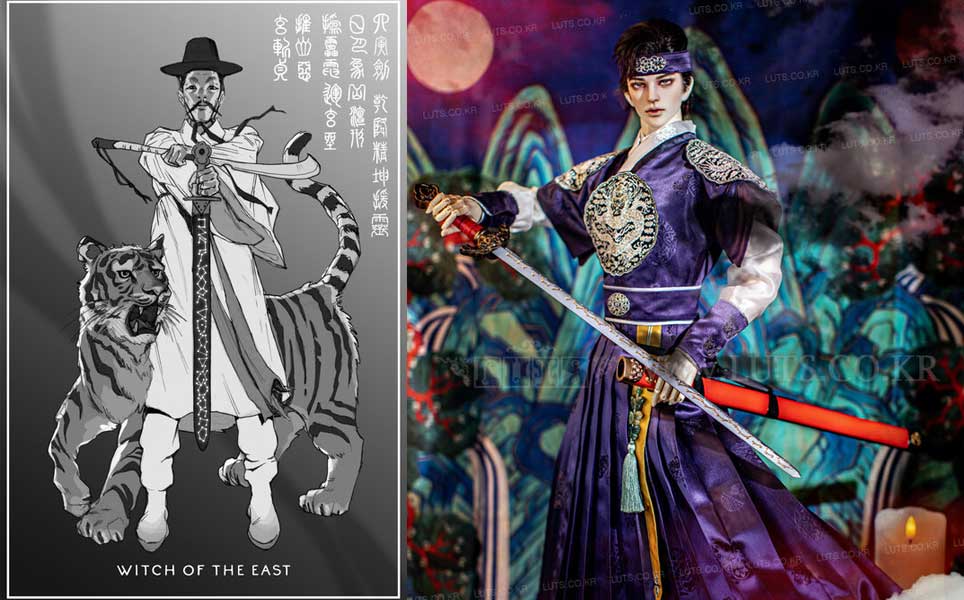
The blade is often engraved with celestial symbols and the 28 Eastern constellations, representing the cardinal directions—believed to guide the soul during spiritual rites.
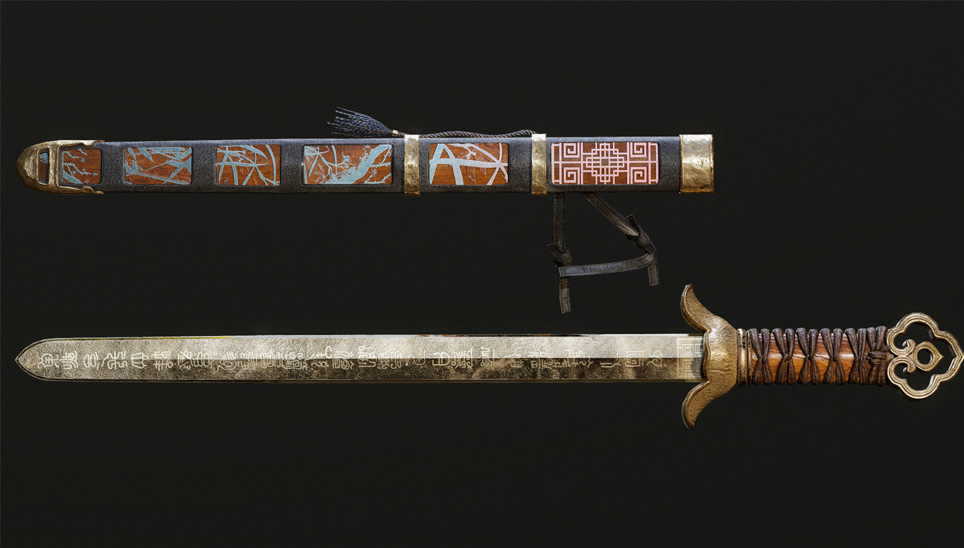
As one of the most iconic weapons in “KPop Demon Hunters” with grand history and origins, here are the places where you can see saingeom in real life.
National Folk Museum of Korea (Seoul)
Exhibits include ceremonial weapons and shamanic tools, including engraved blades like the saingeom. You’ll see parallels with Rumi’s weapon here—especially in their talismanic use of animal symbols and cosmic etchings.
The Korean Shamanism Museum (Seoul)
A hidden gem for those curious about gut rituals and weaponry used in expelling spirits. You’ll find replicas and explanations of weapons like the saingeom, often displayed with dancheong-patterned scabbards and tiger paintings.
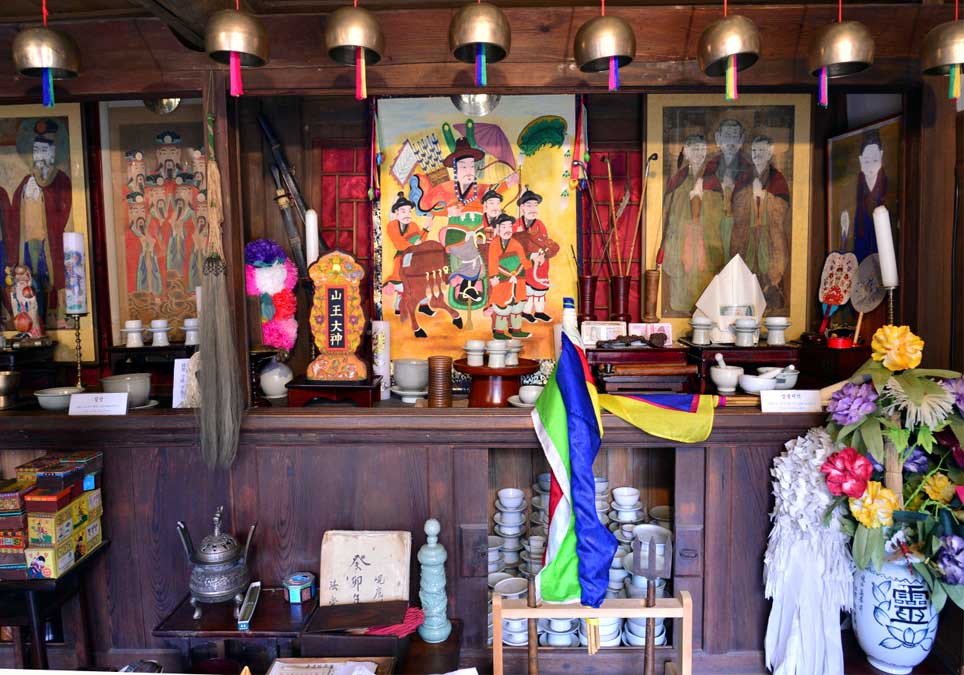
Baekdamsa Temple (Inje-gun, Gangwon-do)
Known for preserving ancient Buddhist tools, the temple’s spiritual atmosphere mirrors the symbolic power of the saingeom and its connection to purification and balance.
Jeju Island’s Chilmeoridang Shrine
A living site of gut rituals. While the rituals are seasonal, exhibits often showcase the ceremonial tools used by mudang (shamans), including spirit blades like the saingeom.
Andong Hahoe Folk Village
Known for preserving Korea’s Confucian and shamanic traditions, this village regularly hosts byeolsingut ceremonies where ritual weapons are still displayed or reenacted.
What to Look For
Engravings of tigers, constellations, or the four cardinal directions—symbolizing protection and spiritual balance. In the film, these become glowing neon motifs. In real life, they’re incised into polished steel with sacred precision.
Zoey’s Sinkal (신칼) – The Spirit Blade of the Mudang
Secondly, we have Zoey’s sinkal as one of the most unique weapons with close ties with Shamanic history and origin in “KPop Demon Hunters”.
Used in shamanic gut ceremonies, the sinkal is a small ritual dagger—not for combat, but for symbolic cleansing. The sole purpose is to “cut” spiritual negativity and protect the ritual space. And in some rites, shamans wield ssanggeom (twin knives), much like Zoey does in the film. The handles may be wrapped in red or blue cloths to represent divine harmony.
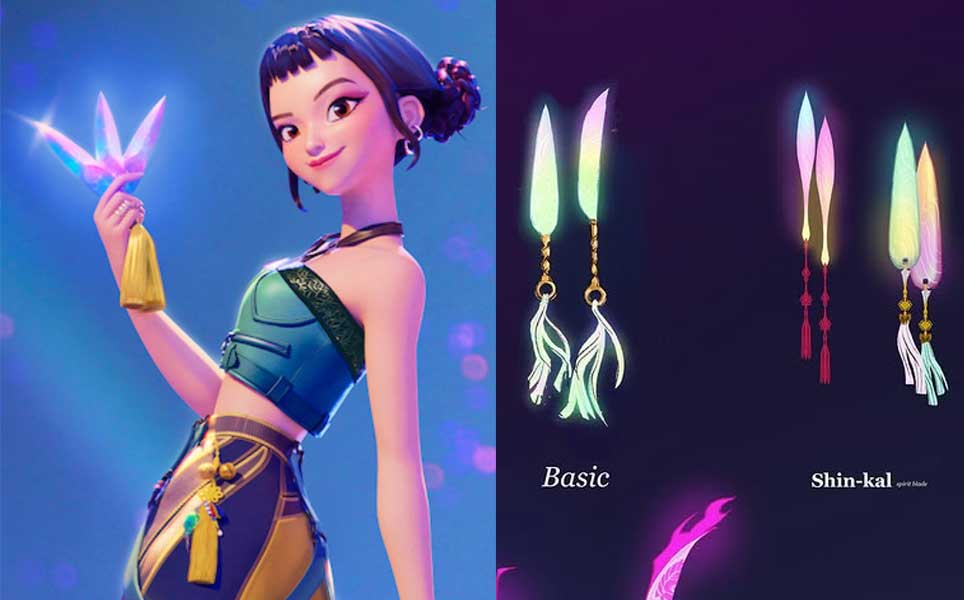
Sinkal are sometimes paired with bujeok (paper talismans), creating a full spiritual toolkit for channeling divine power.
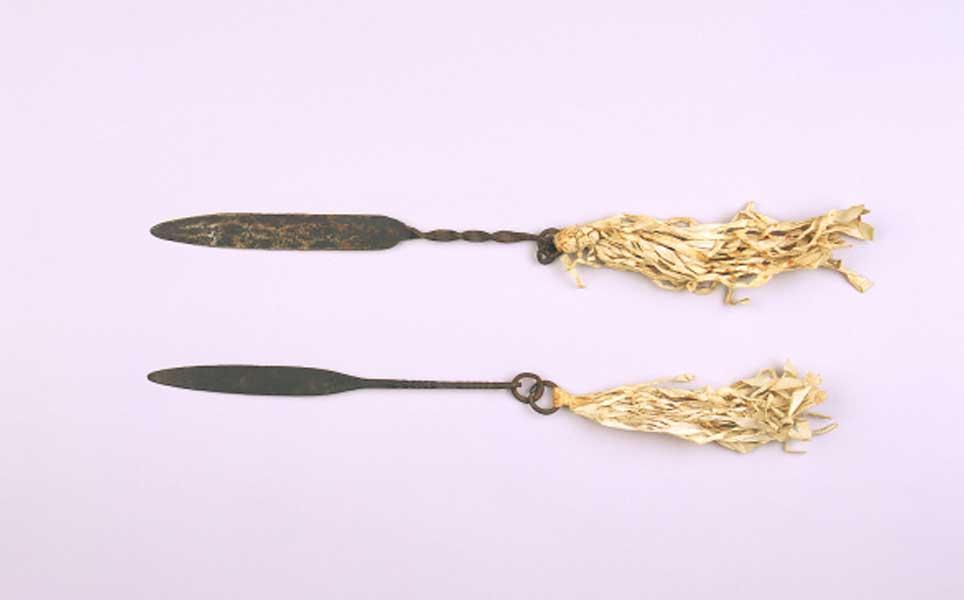
If you’re interested in exploring what sinkal looks like in real life, you can visit these places:
Korean Shamanism Museum (Seoul)
The star destination for all things sinkal. Displays showcase the evolution of these blades, often made of brass or bronze with engraved talismanic symbols.
Jeju Island’s Shaman Shrines
In Jeju’s still-active gut traditions, sinkal are occasionally visible during rituals performed by haenyeo or local priestesses. A respectful visit to shrines like Beophwan Dang or Samseonghyeol gives you a glimpse into these living traditions.
National Museum of Korea (Seoul)
Though not the main focus, their folk ritual collection occasionally features ceremonial knives with accompanying descriptions of their spiritual roles.
What to Look For
Look for blades with red string tassels, curved talismanic engravings, and sometimes metal-inlaid hanja (Chinese characters). In “KPop Demon Hunters”, Zoey’s knives are stylized as dual blades—but the inspiration is unmistakable.
Mira’s Woldo (월도) – The Crescent Moon Blade of the Battlefield
Meanwhile, Mira’s woldo, also called gokdo in some historical texts, is a pole weapon with a massive crescent-shaped blade.
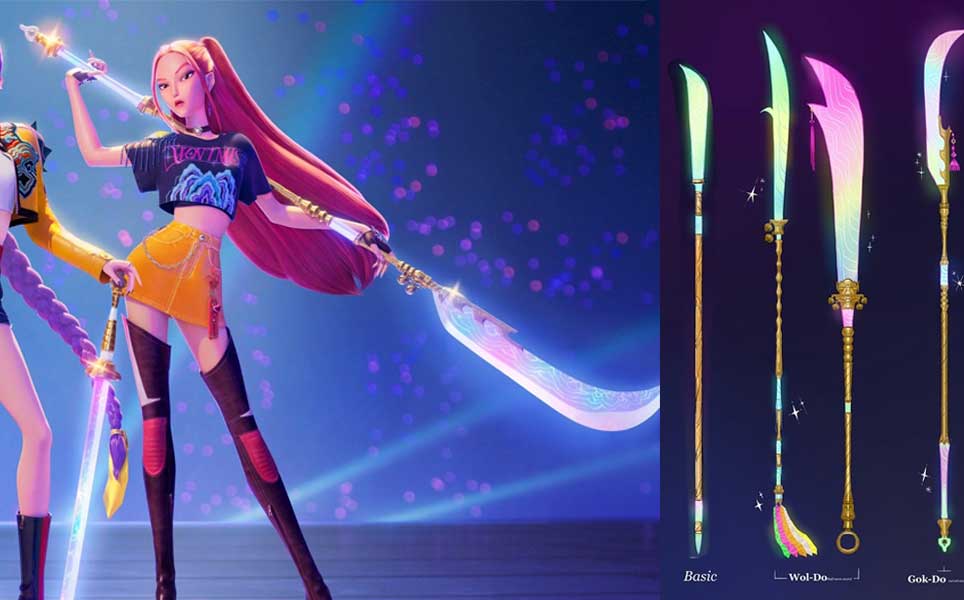
Used by elite military units during the Joseon Dynasty, it demanded strength and agility—perfectly matching Mira’s powerhouse image. The name literally translates to “moon blade,” and it carried symbolic weight as a celestial tool in both martial and ceremonial use.
It was also featured in court dances and processions, choreographed to evoke harmony between heaven and earth.
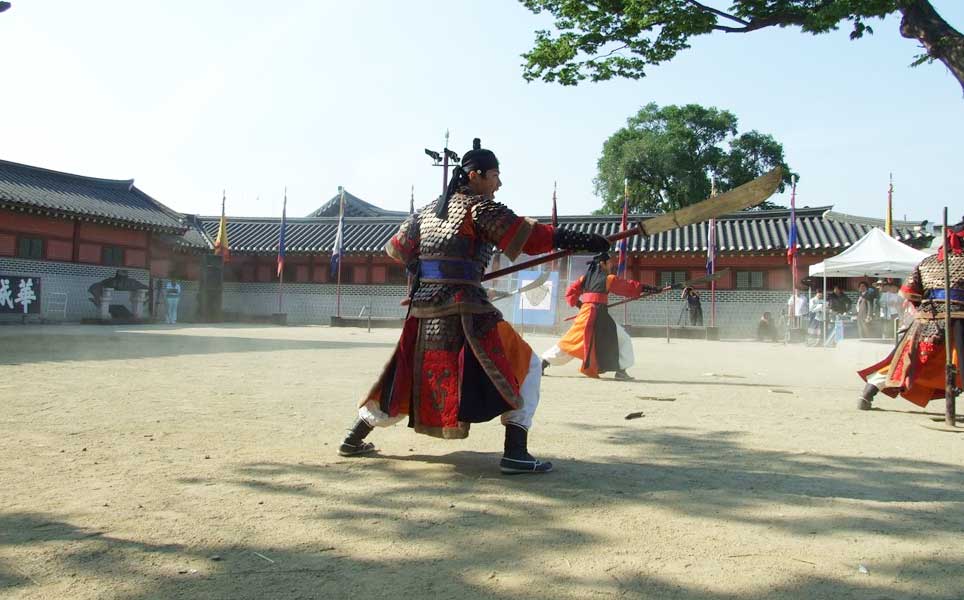
Here are places where you can witness Mira’s woldo in real life.
Korea Army Museum (Gyeryong)
Holds authentic Joseon-era weapons, including woldo, in full scale. Their displays highlight how these weapons were handled in both battle and ceremony.
Gyeongbokgung Palace (Seoul)
During royal guard performances (changing of the guards), you’ll often see reenactors wielding mock woldo. Guards perform with symbolic polearms modeled after the woldo. These shows are free to attend and provide a dynamic historical reenactment. It’s theatrical, but rooted in real tradition.
Andong Folk Museum (Andong)
Offers regional insights into warrior classes and Confucian rituals. Their collection includes polearms and weapons similar to Mira’s, contextualized within ancestral rites and village ceremonies.
The National Museum of Korea (Seoul)
Permanent exhibitions include real woldo and gokdo polearms from the Goryeo and Joseon periods.
Suwon Hwaseong Fortress Martial Arts Show
Traditional martial arts demonstrations feature replica woldo in action—giving you a sense of its real-world power.
What to Look For
The blade is long, slightly curved, and mounted on a tall wooden shaft. In the film, Mira’s woldo glows with norigae tassels and dancheong patterns. In Korea, you’ll find ceremonial versions decorated with red fabric or intricate carvings.
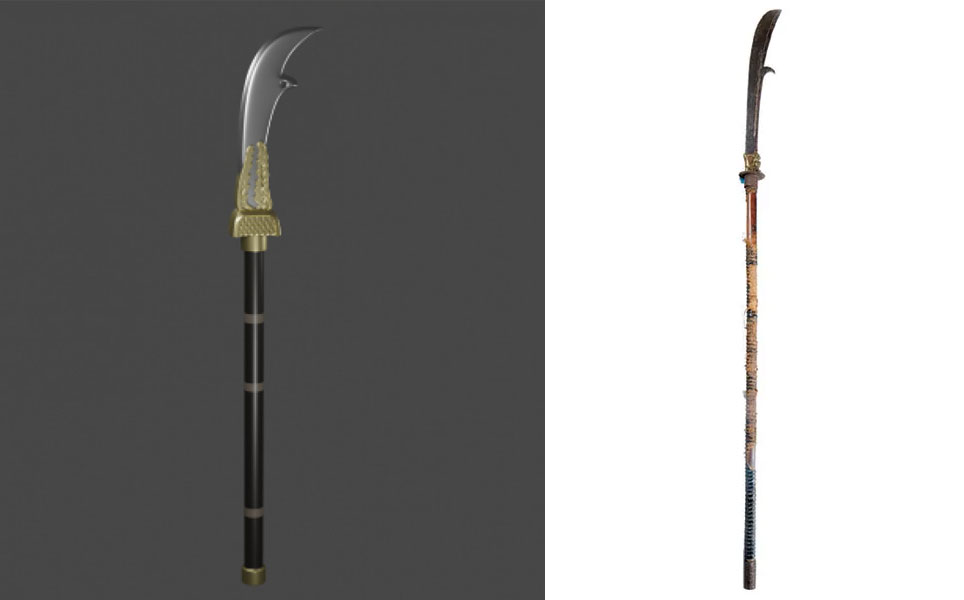
Beyond “KPop Demon Hunters” Weapons: Norigae and Ceremonial Accessories You Probably Missed
In “KPop Demon Hunters”, each HUNTRIX member wears a norigae—traditional pendants worn with hanbok for beauty, luck, and spiritual protection. In real Korean life, norigae are heirlooms passed through generations, often embroidered with animal totems or sacred symbols.
Now, where you can see and get one of these norigaes in South Korea? Here are some of the places:
- National Palace Museum of Korea (Seoul): Their royal attire exhibition features stunning norigae from the Joseon court.
- Bukchon Hanok Village (Seoul): Many artisan shops sell hand-made norigae, with some offering mini-tours explaining the meanings behind each charm.
- Jeonju Hanok Village (Jeollabuk-do): Known for its vibrant hanbok culture, it’s a great place to try on traditional outfits complete with norigae—and feel like a HUNTRIX member yourself.
How to Plan Your HUNTRIX-Inspired Heritage Trip
Before You Go:
- Many shamanic rituals in Korea are still considered sacred. Always approach with cultural respect and avoid intrusive photography unless explicitly allowed.
- Museums with historical weaponry may require advance reservations for guided tours in English.
- Check seasonal festivals like Jeju’s Yeongdeunggut, Gangneung Danoje, or Andong Mask Dance Festival for live performances echoing themes you saw in the film.
REMEMBER: What you saw in “KPop Demon Hunters” is NOT just fantasy. These are stylized legacy, and they’re still here, breathing quietly behind the palace walls and ancestral rituals of Korea.
Map Your Journey: Travel Like a Demon Hunter
Here’s your insider itinerary to walk in the footsteps of HUNTRIX—culturally, not combat-wise.
- Start in Seoul
- Gyeongbokgung Palace: Observe palace guards wielding polearms like the woldo.
- National Folk Museum: Trace the lineage of Korean spiritual artifacts like the saingeom and sinkal.
- Move South to Jeonju
- Intangible Heritage Center: Study real gut practices, ceremonial swords, and the evolution of sinkal.
- Jeonju Hanok Village: Try a norigae workshop, and dress the part.
- End in Gyeongsang or Gangwon
- Visit shaman villages or historical reenactment centers where you can see spiritual rituals that resemble those depicted in the film.
Visit our full editorial on “KPop Demon Hunters”: the filming locations and travel itinerary.
Why “KPop Demon Hunters” Weapons Matters: Culture Isn’t a Costume
Now, “KPop Demon Hunters” isn’t just stylized fantasy—it’s a love letter to Korean history. By exploring these weapons in their real-world context, you’re not just geeking out over fan service. You’re honoring the lineage behind each swing, each blade, and each battle cry.

Hence, after visiting all these places with the complete history and origin of “KPop Demon Hunters” weapons, the next time you rewatch Rumi wield her glowing saingeom, you can finally understand: that sword has been slaying darkness long before animation caught up.
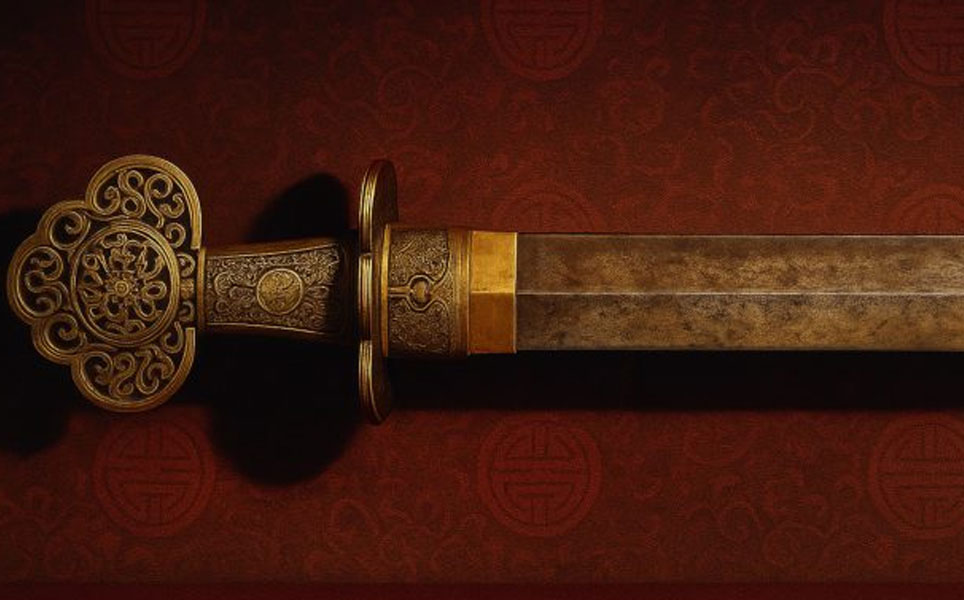
Build Your “KPop Demon Hunters” Weapons Travel Itinerary: Understand the Origin and History
Finally, “KPop Demon Hunters” is your entry point—but Korea’s real mythology is waiting. Add these cultural sites to your next trip and experience the legacy that shaped HUNTRIX. It’s not about fantasy—it’s about seeing how ancient traditions still echo through modern stories. And you can be there to witness it firsthand.
So if you’re traveling to South Korea, don’t stop at the K-pop museums or film locations. Go deeper. Visit the mountain temples where shamans danced with blades. Walk through the museums that preserved Joseon steel. And trace the constellation-carved edges of a sword that once stood between the living and the spirit world.
In the end, you will be stepping into the origin and history that started it all.
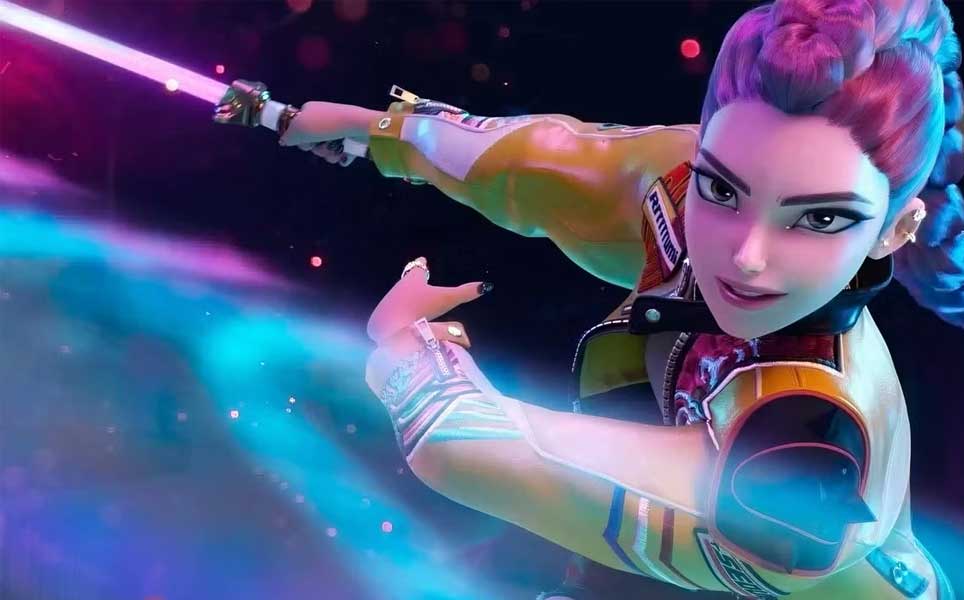
Related Posts
24,946 total views, 34 views today

















